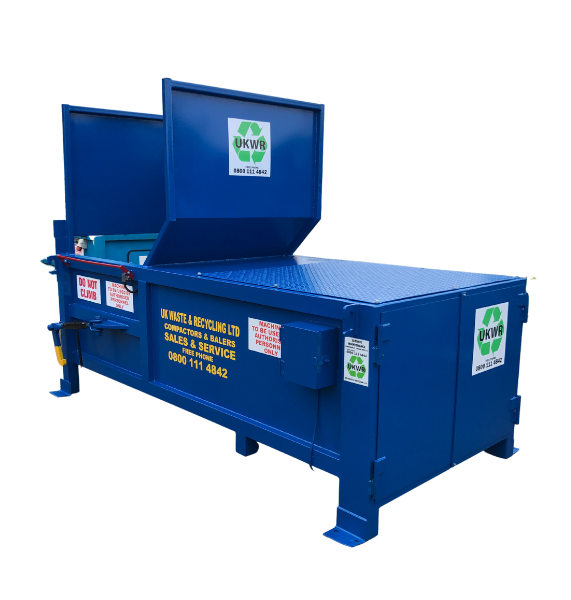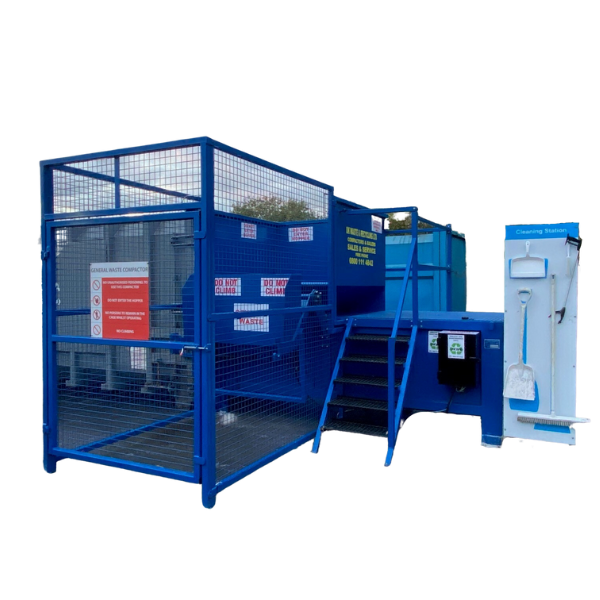Static Waste Compactors
Static Waste Compactors, are designed to deliver significant waste volume reduction, improved logistics, and substantial cost savings, transforming the way you manage waste.

UKWR Static Waste Compactor
Static Waste Compactors
UKWR Static Waste Compactor Static compactors are suitable for compacting: general waste and dry mixed recyclables. They have various loading…

UKWR Static Waste Compactor c/w Bin Loader & Cage
Static Waste Compactors
UKWR Static Waste Compactor c/w Bin Loader & Cage Static compactors are suitable for compacting: general waste and dry mixed…
Free Delivery Available
We offer nationwide delivery, installation and training as standard
Servicing Included
As part of your purchase will include free servicing at regular intervals
UKWR Warranty
All of machines are covered by our UKWR warranty scheme

Generate Rebates
We offer competitive cash rebates on your recyclable goods
Static Waste Compactors Frequently asked Questions
What is a Static Waste Compactor?
A static waste compactor is a type of waste management equipment designed to compress waste on-site into a compact and manageable form. Unlike mobile compactors, static compactors are typically fixed in one location and are used where there is a high volume of waste to be managed, such as large manufacturing facilities or waste transfer stations. They work by using a powerful press to compact waste into a separate receiver container or bin. Once full, this container can be transported for waste disposal or recycling, while the compactor unit remains in place. This process makes waste handling more efficient, reduces transportation costs, and can improve environmental sustainability by preparing waste for recycling.
How does a stationary compactor work?
A stationary compactor works by compressing waste to reduce its volume. Waste is loaded into the compactor, and a hydraulic ram compresses the waste into a separate container. Once this container is full, it’s detached and transported for disposal or recycling, while the compactor remains in place. This process enables efficient, ongoing waste management.
What is the difference between stationary and self contained compactor?
Stationary and self-contained compactors are two types of waste compacting systems, each suited for different types of waste and applications.
Stationary Compactors: These are designed to handle dry waste, like paper, plastic, or cardboard. They are typically bolted or welded into place, hence the term “stationary.” They compress waste into a separate receiver box or container. Once the container is full, it is hauled away for waste disposal while the compactor unit stays in place. This makes stationary compactors ideal for locations generating large amounts of dry waste and that have ample space for a fixed compactor and separate receiver container.
Self-Contained Compactors: These are single, leak-proof units designed for wet waste or waste that might produce liquid during compaction, like food waste. In this case, the compactor and the container are one unit to prevent any liquid leakage during compaction or transportation. Once the unit is full, the entire compactor is hauled away for waste disposal and then returned to the site. Self-contained compactors are excellent for restaurants, supermarkets, and other locations that generate wet or liquid waste.
What types of material can I bale?
Various materials can be baled, including hay, straw, cardboard, paper, plastics, textiles, metals, tires, and plastic film. Baling compresses these materials into dense bundles for storage, transportation, or recycling purposes.





